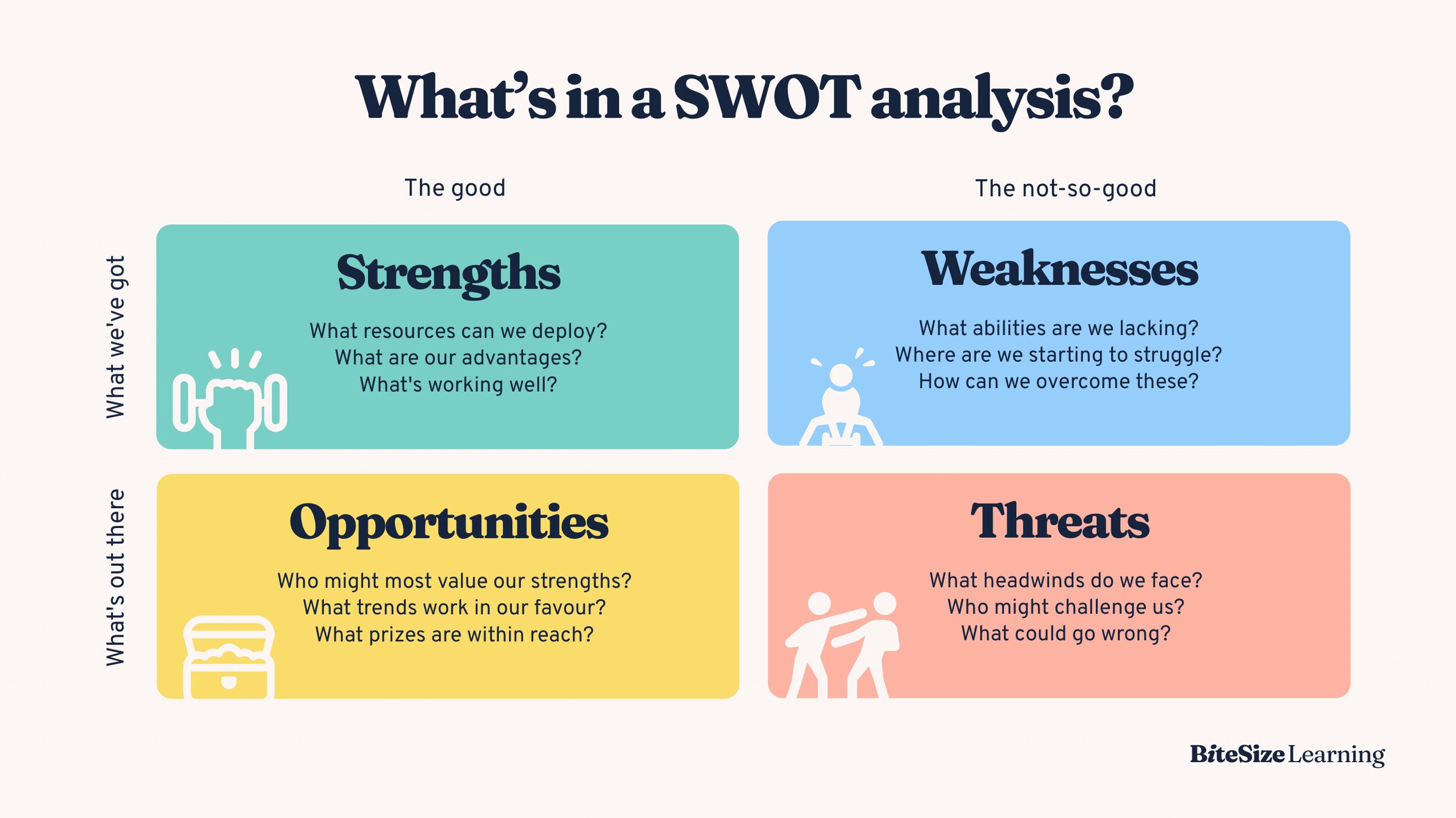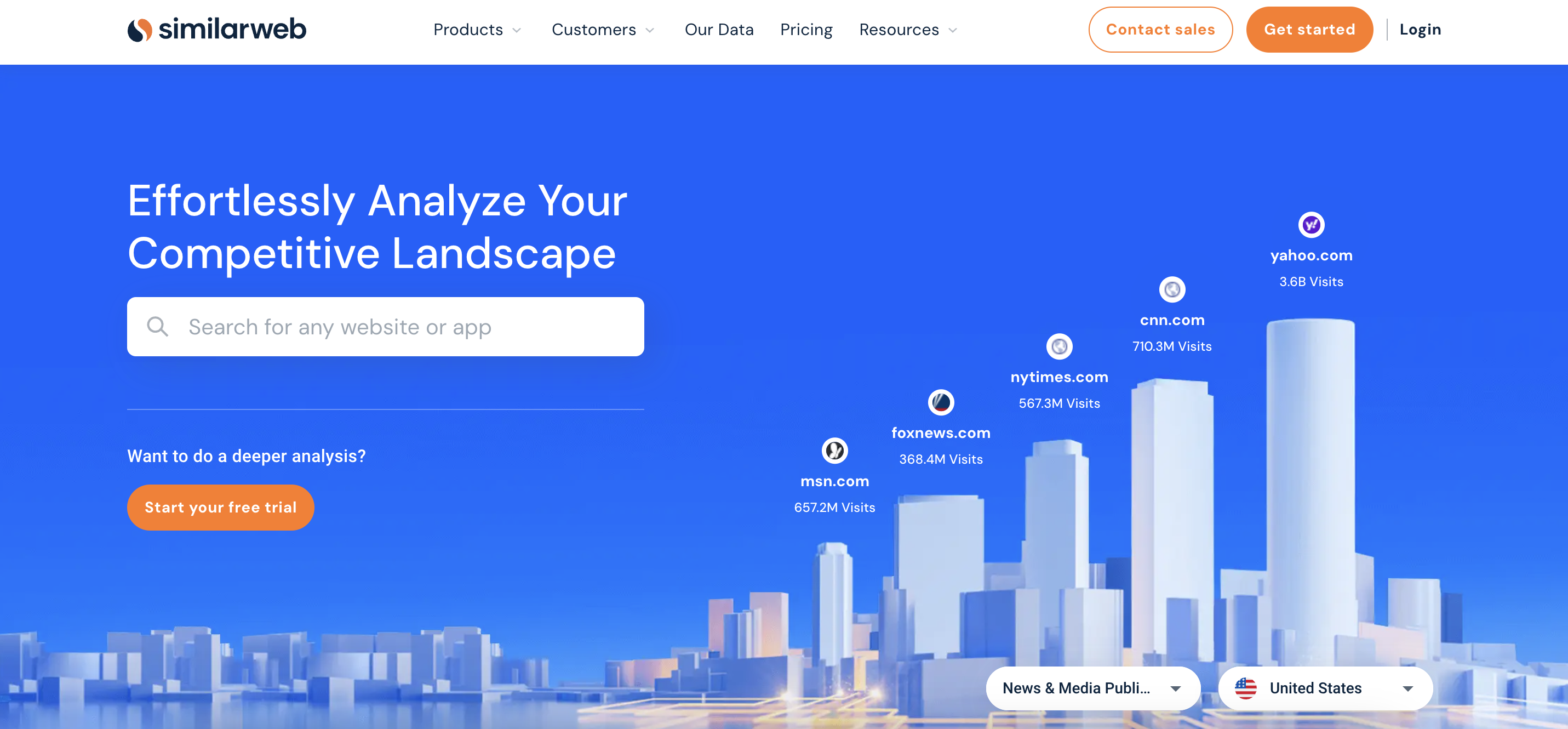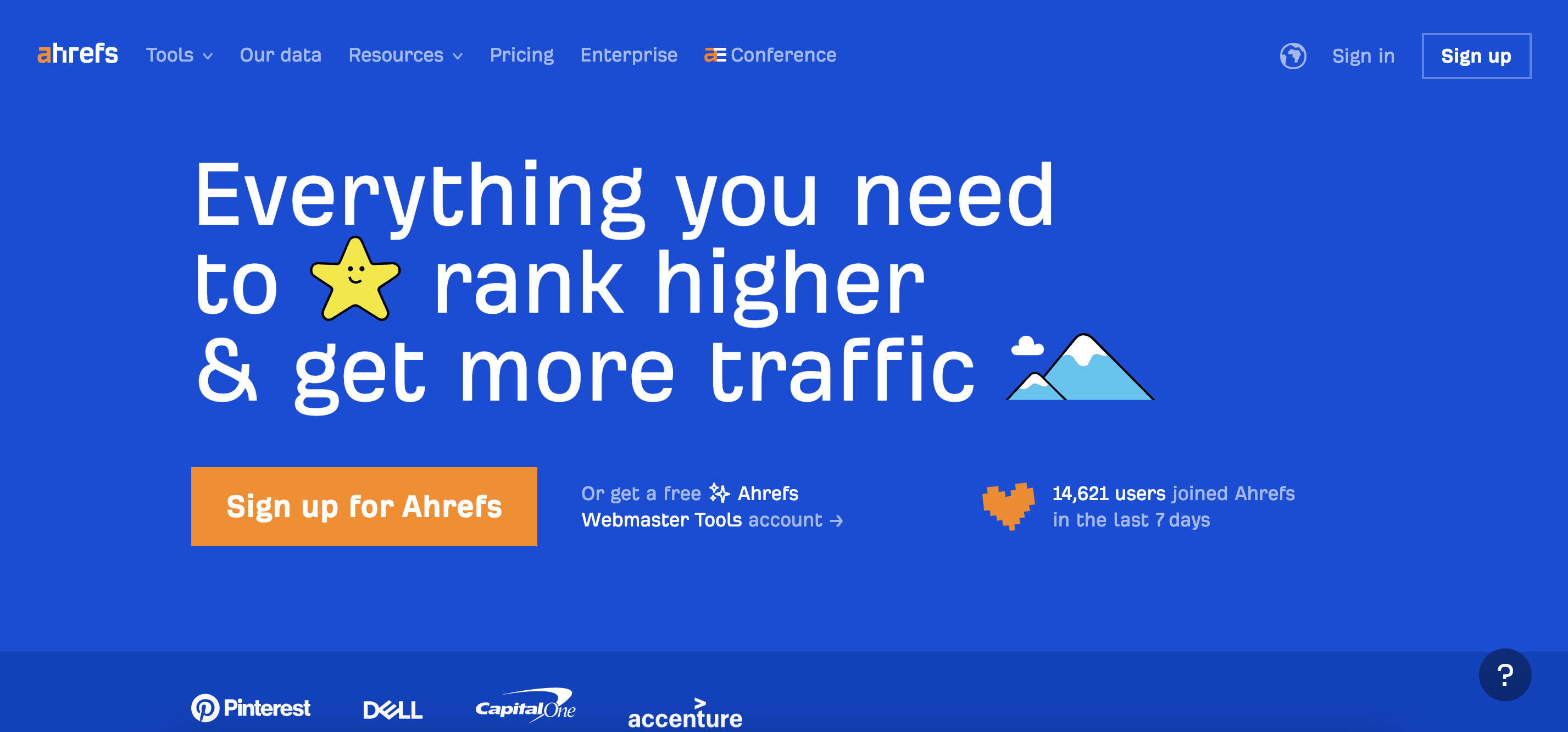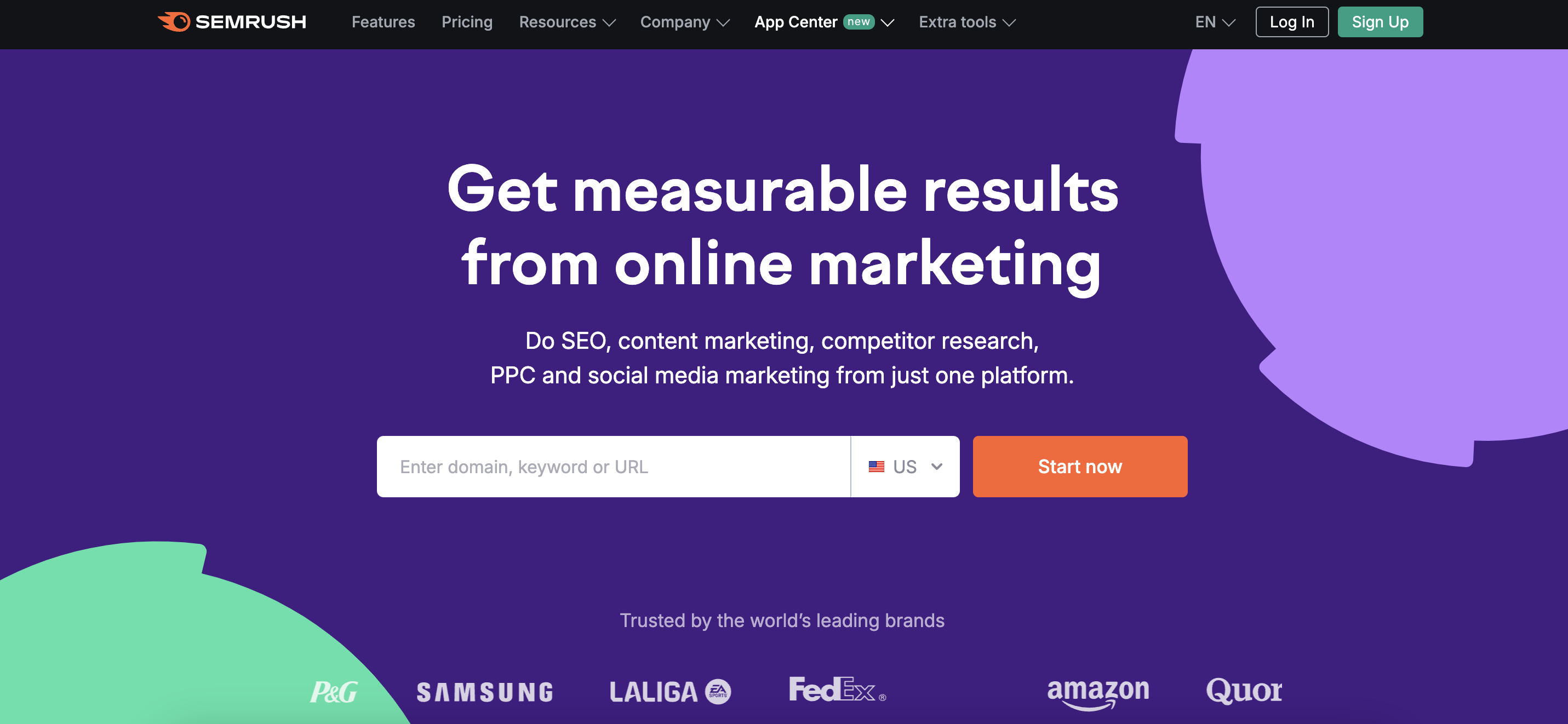- Blog
- Compare My Website To Competitors: How to Gain an Edge in 2025
Compare My Website To Competitors: How to Gain an Edge in 2025
-
Nikolett Lorincz
- Ecommerce
- 6 min read
Table of Contents
Have you ever wondered why your competitor’s website always seems to attract more traffic or rank higher on search engines? If so, you’re not alone.
The secret often lies in solid competitor research, which is your roadmap to understanding where your site stands and how it can leapfrog the competition.
In this article, we’ll walk you through how to compare your site to competitor websites and, more importantly, how to use those insights to gain a competitive edge.
Let’s jump in!
What is competitor analysis?
Competitor analysis (also known as competitive analysis or competitor research) is a deep dive into your rivals’ digital presence—from their website traffic to their marketing strategies—and involves analyzing multiple competitors to gain comprehensive insights.
It’s like getting the inside scoop on what’s working for them—and what’s not.
By studying your top competitors, you can identify gaps in your own strategy and uncover opportunities to stand out.
Why do competitor analysis?
Think of competitor analysis as your website’s secret weapon.
It’s crucial for optimizing your website because it helps you understand the market landscape, spot emerging trends, and identify areas where your site may be underperforming.
Whether you’re trying to boost your SEO rankings, improve user experience, or fine-tune your content strategy, knowing what your competitors are up to can give you the edge you need.
How to compare your website to competitors?
Ready to roll up your sleeves and dive into competitive analysis? Here’s a step-by-step guide to comparing your website to your competitors.
Step 1: Identify your competitors
First things first—who exactly are you up against? Competitors come in three flavors: direct, indirect, and aspirational.
- Direct competitors are those who offer the same products or services as you.
- Indirect competitors may not sell the same things, but they target the same target audience.
- Aspirational competitors are the industry giants you aspire to be like, even if they’re not in the same market niche.
Identifying these competitors is crucial because it helps you understand who’s vying for your audience’s attention and what you’re up against.
Step 2: Do a SWOT analysis
Once you’ve identified your competitors, it’s time to perform a SWOT analysis—this is where you assess the Strengths, Weaknesses, Opportunities, and Threats for both your site and your competitors.

- Strengths: What are your website’s unique advantages? What does your competition do well?
- Weaknesses: Where does your website fall short? Where do your competitors struggle?
- Opportunities: What market trends or gaps can you exploit?
- Threats: What external factors could impact your success?
Use these insights to craft strategies that leverage your strengths, address weaknesses, seize opportunities, and mitigate threats.
Step 3: Dive into key metrics
Now that you’ve got a strategic overview, it’s time to dig into the details.
Here are some critical metrics to compare between your site and your competitors:
1. Website traffic
Website traffic is the lifeblood of your online presence, and understanding the role of organic keywords is crucial.
It’s not just about how many people are visiting your site, but also understanding the quality and behavior of that traffic.
- Total visits: This metric shows the overall number of visits to your site, but it’s essential to look deeper. Are these visits resulting in meaningful engagement, or are users bouncing quickly?
- Unique visitors: Unique visitors help you gauge how many individuals are coming to your site. If your competitors are attracting more unique visitors, you may need to reconsider your outreach strategies.
- Bounce rate: This tells you the percentage of visitors who leave your site after viewing just one page. A high bounce rate compared to your competitors could indicate that your landing pages or content aren’t meeting visitors’ expectations.
- Session duration and pages per session: These metrics provide insight into how engaging and user-friendly your site is. Longer sessions and more pages per visit suggest that users find your content valuable.
Tools like Google Analytics, SimilarWeb, and SEMrush are crucial for gathering and comparing this data. By tracking these metrics, including your competitors’ organic keywords, you’ll gain a comprehensive understanding of where you stand in terms of traffic and what you need to do to improve.
2. SEO performance
SEO is the digital battleground where visibility and discoverability are won or lost.
A strong SEO strategy can propel your website to the top of search engine results, but this is also where your competitors are likely focusing their efforts.
- Keyword analysis: Look at the keywords your competitors are ranking for. Are they targeting high-traffic keywords that you’re missing out on? Tools like Ahrefs, Moz, and SEMrush can help you identify these gaps and opportunities.
- Backlink profile: Backlinks are a critical factor in SEO. Compare the quantity and quality of backlinks your competitors have. If they’re earning links from reputable sites that you’re not, it’s time to step up your link-building game.
- On-page SEO: This includes everything from meta tags and headers to the content itself. How well are your competitors optimizing their pages? Analyze their use of keywords, internal linking, and content structure to see where you can improve.
- Technical SEO: Don’t overlook the importance of site speed, mobile optimization, and secure HTTPS. These technical aspects can significantly impact your SEO rankings. Use tools like Google Search Console and Screaming Frog to compare the technical health of your site with that of your competitors.
By understanding and improving upon these SEO metrics, you can enhance your site’s visibility and potentially outrank your competitors.
3. User experience (UX)
User experience is the heartbeat of your website. A site that’s easy to navigate and pleasing to use will not only retain visitors but also encourage them to engage more deeply with your content.
- Loading speed: Slow loading times can frustrate users and lead to high bounce rates. Use Google PageSpeed Insights to compare your site’s loading speed with your competitors’. If they’re faster, it might be time to optimize your site’s performance.
- Mobile-friendliness: With more users accessing websites from mobile devices, mobile optimization is crucial. Compare your site’s mobile usability with that of your competitors. Tools like Google’s Mobile-Friendly Test can help you identify areas for improvement.
- Navigation: Is your site’s navigation intuitive? Compare your site’s menu structure, ease of finding information, and overall user journey to your competitors. A more straightforward, user-friendly navigation can keep visitors on your site longer.
- Overall design: First impressions matter. Assess the visual appeal and layout of your site compared to your competitors. Is your design modern and engaging, or does it need an update to match industry standards?
Tools like Hotjar and Crazy Egg can provide heatmaps and user session recordings to help you see exactly how users interact with your site. By improving the user experience, you can keep visitors engaged and encourage them to take action.
4. Content quality and strategy
Content is king, but it’s not just about quantity—it’s about quality, relevance, and timing.
- Content types: What types of content are your competitors producing? Are they focusing on blog posts, videos, infographics, or podcasts? By understanding their content mix, you can identify gaps in your strategy or areas where you can diversify.
- Publishing frequency: How often are your competitors publishing new content? If they’re more consistent than you, it might explain why they’re attracting more traffic. Consider developing a content calendar to keep up with or exceed their publishing pace.
- Content depth and value: Analyze the depth and usefulness of your competitors’ content. Are they providing valuable insights, data, and actionable advice, or are they just scratching the surface? Aim to create content that is not only comprehensive but also genuinely helpful to your audience.
- Engagement metrics: Look at how users are engaging with your competitors’ content. High levels of comments, shares, and backlinks can indicate that their content is resonating with the audience. Use this insight to create content that drives similar or better engagement.
Conducting a content gap analysis will reveal opportunities where you can fill the void with high-quality, targeted content that meets the needs of your audience better than your competitors.
5. Social media presence
Social media is a critical component of your overall strategy. It’s where brands build relationships, engage with audiences, and drive traffic back to their websites.
- Engagement rates: Compare how often your competitors’ posts are liked, shared, and commented on. High engagement rates often indicate that their content is resonating well with their audience. If your engagement is lagging, it might be time to rethink your content and posting strategy.
- Follower growth: Track the growth of your competitors’ followers over time. A steady increase in followers suggests effective social media strategies. Compare this with your growth rate to see if you need to adjust your approach.
- Content strategy: What type of content is your competition sharing on social media? Are they focusing on educational posts, promotional content, or interactive elements like polls and quizzes? Understanding their strategy can help you refine your own.
- Influencer collaborations: If your competitors are collaborating with influencers, it might be a sign that these partnerships are paying off. Consider exploring influencer marketing if you’re not already doing so, or finding ways to improve your current collaborations.
Tools like Hootsuite, Buffer, and Social Blade provide in-depth analytics and comparison features that allow you to see where you stand in the social media arena and how you can improve.
5 best competitor analysis tools
To get the most out of your competitor analysis, you’ll need the right analysis tool.
Below, we’ll dive into some of the most powerful competitor analysis tools available, breaking down what each one does best and how you can leverage them to elevate your website’s performance.
1. Google Search
Let’s start with the basics.
Google Search is the simplest and most accessible tool for competitor analysis. While it might not offer the in-depth analytics of some paid tools, it’s an excellent starting point for understanding how your competitors are performing in search results.
- Keyword research: Use Google Search to see which keywords your competitors are ranking for. Simply enter relevant search terms and see which sites consistently appear at the top. This can give you a quick snapshot of the competitive landscape.
- SERP features: Notice which competitors are appearing in featured snippets, local packs, or other special SERP features. If they are, you might want to optimize your content to compete in these areas as well.
- AdWords insight: By searching your primary keywords, you can see if your competitors are running paid ads. This can offer insights into their paid search strategies.
While Google Search doesn’t provide analytics, it’s invaluable for getting an immediate sense of who your competitors are and where they stand.
2. SimilarWeb

SimilarWeb is a comprehensive tool that offers a broad range of data on your competitors’ online presence. It’s particularly useful for understanding website traffic and audience behavior.
- Traffic overview: SimilarWeb provides an estimate of your competitors’ total website traffic, including visits, visit duration, and bounce rates. This helps you gauge the scale of their online presence.
- Traffic sources: You can see where their traffic is coming from—whether it’s direct, referral, search, social, or paid. This breakdown allows you to understand their marketing channels and how you might need to adjust your own efforts.
- Audience insights: SimilarWeb also offers demographic data, including the geographic location of your competitors’ visitors, their interests, and browsing habits. These insights can help you tailor your content and marketing strategies to attract a similar audience.
- Competitor benchmarking: The tool allows you to directly compare your site’s performance against your competitors on various metrics, helping you identify areas for improvement.
SimilarWeb’s in-depth traffic and audience data make it a powerful tool for businesses looking to understand not just how much traffic their competitors are getting, but where it’s coming from and what their audience looks like.
3. Ahrefs

Ahrefs is a powerhouse when it comes to SEO and backlink analysis. It’s a favorite among digital marketers for its ability to provide detailed insights into your competitors’ SEO strategies.
- Backlink analysis: Ahrefs excels in tracking the backlink profiles of your competitors. You can see who’s linking to them, the quality of those links, and the anchor texts being used. This information is crucial for developing your own link-building strategy.
- Keyword explorer: Ahrefs offers robust keyword research capabilities. You can discover which keywords your competitors are ranking for, estimate the traffic those keywords are driving, and identify new keyword opportunities for your site.
- Content explorer: This feature allows you to see the most popular content in your niche based on shares, backlinks, and organic traffic. You can analyze what’s working for your competitors and use that insight to create better, more engaging content.
- Site audit: Ahrefs also provides a comprehensive site audit tool that can help you compare your site’s technical SEO with that of your competitors, identifying issues that need fixing to improve your rankings.
With its focus on SEO and backlinks, Ahrefs is essential for businesses looking to improve their search engine visibility and build a robust link profile.
4. SEMrush

SEMrush is an all-in-one marketing toolkit that offers a wide range of features for competitor analysis. It’s particularly strong in SEO and SEM analysis, but it also covers social media, content marketing, and more.
- Keyword gap analysis: SEMrush allows you to compare your keyword profile with that of your competitors, identifying keywords they rank for that you don’t. This helps you find new opportunities to target.
- Domain overview: This feature gives you a snapshot of your competitors’ overall online performance, including traffic, backlinks, and paid search efforts. It’s a great way to get a high-level view of how you stack up against them.
- Advertising research: If your competitors are running PPC campaigns, SEMrush can provide insights into their ad copy, budget, and the keywords they’re bidding on. This is invaluable for refining your own paid search strategies.
- Social media tracker: SEMrush also includes tools to monitor your competitors’ social media performance. You can track their followers, engagement, and content performance across multiple platforms.
- Position tracking: This tool allows you to monitor your competitors’ rankings for specific keywords over time, helping you stay ahead of them in search results.
SEMrush’s versatility makes it an excellent choice for businesses that want a comprehensive tool to cover all aspects of digital marketing, from SEO and PPC to social media and content.
5. Moz

Moz is another popular SEO tool, known for its user-friendly interface and robust data. It’s particularly useful for businesses that are focused on improving their search engine rankings.
- Keyword explorer: Moz’s keyword research tool helps you find keywords your competitors are ranking for, along with metrics like search volume and difficulty. This can help you identify low-hanging fruit to target.
- Link explorer: Similar to Ahrefs, Moz offers detailed insights into your competitors’ backlink profiles. You can see who’s linking to them and use this information to build your own link-building strategy.
- On-page grader: Moz’s on-page optimization tool allows you to compare your site’s on-page SEO with that of your competitors, helping you fine-tune your content for better rankings.
- Rank tracking: Moz’s rank tracking feature lets you monitor your competitors’ positions in search results, helping you stay informed about their SEO performance.
Moz is a great tool for businesses that want to focus on improving their search rankings through keyword optimization and link building.
How to use competitor research to gain a competitive edge
Now that you’ve gathered all this valuable data on your competitors, the next step is turning those insights into actionable strategies that give your website the upper hand.
Here’s how you can use what you’ve learned during your competitive analysis to outshine the competition:
1. Capitalize on competitor weaknesses
Every competitor has a weak spot, and your job is to exploit it.
If your competitive analysis reveals that a competitor’s domain has slow loading times or poor mobile optimization, prioritize enhancing these aspects on your own site.
Perhaps their content strategy lacks depth or consistency—this is your chance to create more comprehensive, engaging content that fills the gaps they’ve left open.
By directly addressing areas where your competitors are underperforming, you can attract their disillusioned audience and turn their weaknesses into your strengths.
2. Improve upon what they’re doing well
If your competitors are excelling in certain areas, don’t shy away—learn from them.
Maybe they have a stellar social media presence or a highly effective SEO strategy. Instead of copying, analyze what makes these tactics successful and think about how you can take them a step further.
Can you create even more engaging social content or optimize your SEO efforts for untapped keywords? The key is to innovate upon their successes and make them uniquely yours.
3. Identify and exploit market gaps
Your competitor analysis should highlight areas of the market that are underserved. These are your golden opportunities.
For instance, if none of your competitors are addressing a particular niche audience or a trending topic, this could be your moment to step in. Tailor your content, products, or services to meet this unfulfilled demand, positioning your website as the go-to resource.
This approach not only differentiates you from the competition but also allows you to capture new segments of the market.
4. Refine your unique selling proposition
One of the most powerful outcomes of competitor analysis is a clearer understanding of your own unique selling proposition (USP).
By seeing what your competitors offer—and where they fall short—you can refine your USP to highlight what sets you apart. Whether it’s superior customer service, more innovative products, or a more engaging user experience, make sure your website clearly communicates why visitors should choose you over anyone else.
A strong, distinct USP can be the deciding factor in winning over customers.
5. Stay agile and continuously adapt
The digital landscape is always evolving, and so should your strategy.
Use competitor analysis not as a one-time task but as an ongoing process. Regularly monitor your competitors’ activities and adapt your strategies in response to their moves and market changes.
By staying agile and continually refining your approach based on new insights, you’ll maintain a competitive edge that’s both sharp and enduring.
Wrapping up
Comparing your website to competitors isn’t just a one-time task, it’s an ongoing process that can provide you with invaluable insights.
By identifying your competitors, performing a SWOT analysis, and digging into key metrics, you’ll be well on your way to not just competing—but leading the pack.
So grab those tools, roll up your sleeves, and start analyzing. Your next big breakthrough could be just a few clicks away.
Migration has never been easier
We made switching a no-brainer with our free, white-glove onboarding service so you can get started in the blink of an eye.

What should you do next?
Thanks for reading till the end. Here are 4 ways we can help you grow your business:
Boost conversions with proven use cases
Explore our Use Case Library, filled with actionable personalization examples and step-by-step guides to unlock your website's full potential. Check out Use Case Library
Create a free OptiMonk account
Create a free OptiMonk account and easily get started with popups and conversion rate optimization. Get OptiMonk free
Get advice from a CRO expert
Schedule a personalized discovery call with one of our experts to explore how OptiMonk can help you grow your business. Book a demo
Join our weekly newsletter
Real CRO insights & marketing tips. No fluff. Straight to your inbox. Subscribe now
Nikolett Lorincz
- Posted in
- Ecommerce
Partner with us
- © OptiMonk. All rights reserved!
- Terms of Use
- Privacy Policy
- Cookie Policy
Product updates: January Release 2025








